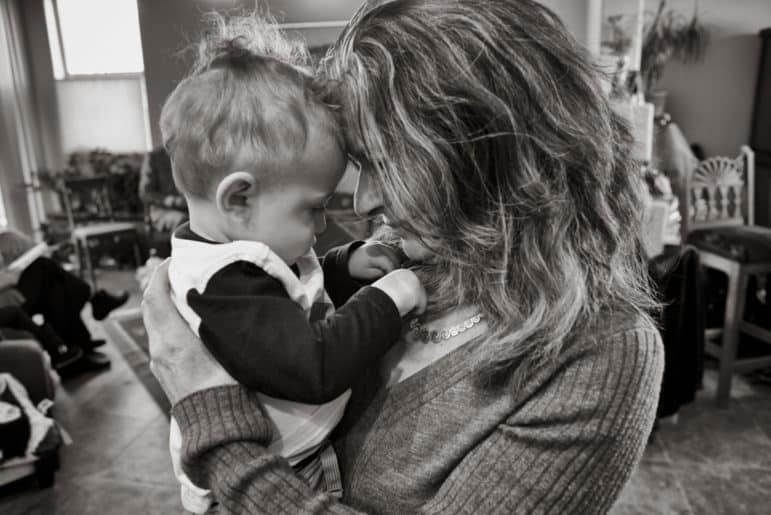
Don Usner / for Searchlight New Mexico
Deborah Harris, senior consultant for New Mexico’s Infant Mental Health Teams, with a baby.
Today, more than at any other time in history, science and medicine show the vast, interconnected dance between a baby’s outside world and the core of its being: its brain.
The most basic human connections are being understood through the lens of brain science, neuroscience, behavioral science and beyond, revealed in magnetic resonance imagining at institutes such as Harvard University’s Center on the Developing Child.
Today’s studies show the harm down to the dendrites and DNA.
Severe trauma, also known as adverse childhood experiences, can leave children in near-constant fear and anxiety, always on the verge of fight-flight-or freeze mode, research shows. The result can be a constant release of stress hormones in the body, harmful enough to alter architecture in the developing brain.
“The biological response to this toxic stress can be incredibly destructive and last a lifetime,” the American Academy of Pediatrics described the process in a 2014 policy paper.
Beatings that leave bruises, sexual or emotional abuse, domestic violence, a drug-addicted parent — those and other major childhood adversities can shrink key parts of the brain, MRI scans show.
“We’ve seen the impacts of adverse childhood experiences for years,” said Deborah Harris, senior consultant for New Mexico’s Infant Mental Health Teams. The program sees some of the state’s most vulnerable babies, removed from their homes by Child Protective Services for maltreatment. “Now we actually have the brain research to support the theory.”
Harris says the science shows how critical it is to give infants and children the services they need. They can’t be expected to get over the abuse on their own.
“It’s embedded in their brain and body,” Harris said.
The concept of adverse childhood experiences, or ACEs, was born in 1998 with a study of more than 17,000 Kaiser Permanente patients in San Diego.
It revealed that physical abuse, sexual abuse and other ACEs were far more common than previously understood. And as the study discovered, the more ACEs people experienced, the more likely they were to have bad outcomes, including drug abuse, alcoholism, mental illness, suicide, cancer and chronic, life-shortening diseases.
The ACE study offered the medical world a new way to understand human development. The brain science has taken it even further.
Brain scans show childhood trauma can cause shrinkage in the hippocampus, the area linked to memory storage and retrieval. The constant state of high-stress can alter the amygdala, the brain’s fear-processing center, and affect the neuro-endocrine and immune systems.
Harvard University’s Center on the Developing Child defines toxic stress as “excessive or prolonged activation of stress response systems in the body and brain.” That sort of activation can lead to dysfunction in the prefrontal cortex, the area of the brain linked to cognition and decision-making.
On one thing, all researchers agree: Trauma is particularly harmful from ages 0 to 3, when more than 1 million new neural connections in the brain are formed every second.
The stress from child maltreatment can hinder the formation of neural pathways, which let neuro-signals zoom across different parts of the brain to form critical connections, research shows.
A thriving neural network promotes health in the parts of the brain responsible for behavior, language, memory, motor skills, impulse control and executive functioning, according to the 1998 landmark study that launched the ACEs concept.
Chronic releases of stress hormones are also linked to changes in the way DNA is expressed. The study of epigenetics examines how stress can modify chemical “markers” on genes, switching them on or silencing them.
Scientists now theorize that toxic stress causes epigenetic changes that allow trauma to be transmitted over the generations. The mechanism offers an explanation for the historical trauma experienced by Native Americans, by children of Holocaust survivors, and others.
In response, the AAP has called for “a new basic science of pediatrics,” based on an “ecobiodevelopmental” model. It would take into account how children’s experiences — and traumas — can shape lives well into the future.